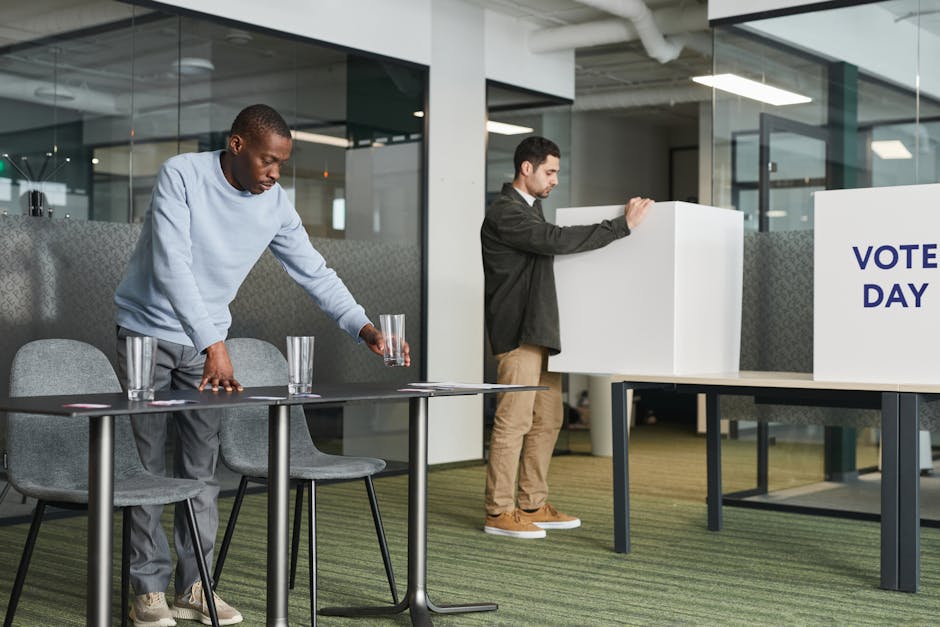Return to Work: What Employees Are Most Excited About in Late 2023
“As the workplace landscape continues to evolve, employees are expressing renewed excitement about returning to the office. This article explores the key factors driving this enthusiasm, including social interactions, flexible work arrangements, and enhanced safety measures, providing insights for HR and facility managers to create engaging work environments. ”

The Resurgence of Office Enthusiasm: What's Driving Employees Back?
As we approach the end of 2023, the workplace landscape continues to evolve, presenting new challenges and opportunities for both employees and employers. Recent surveys have revealed a surprising trend: a growing excitement among workers about returning to the office. But what exactly is fueling this enthusiasm? Let's delve into the factors that are making employees eager to swap their home offices for corporate spaces once again.

The Power of Social Interactions
One of the most significant drivers of workplace excitement is the prospect of face-to-face social interactions. After years of remote work, employees are craving the spontaneous conversations and impromptu brainstorming sessions that occur naturally in an office setting. In fact, 48% of surveyed workers cited impromptu social interactions with colleagues as the top reason they're excited to return to the office.
These social connections go beyond mere small talk. They foster a sense of building workplace community and belonging, which is crucial for employee satisfaction and productivity. For many, the office represents a space where relationships are built, ideas are exchanged, and company culture thrives.
Flexibility: The New Non-Negotiable
While employees are excited about returning to the office, they're not willing to give up the flexibility they've grown accustomed to during remote work. The concept of flexibility has evolved from a perk to a fundamental expectation. A staggering 63% of employees state that flexibility would make them feel more empowered in their roles.
This desire for flexibility manifests in several ways:
- The ability to choose which days to come into the office
- Freedom to split time between the workplace and home
- Flexible work hours that accommodate personal schedules
HR managers and company leaders should take note: offering flexible work arrangements is now just as important as traditional benefits like 401(k) matching and paid time off.
Safety First: The Comfort of COVID Precautions

The ongoing concern about health and safety continues to play a significant role in employees' comfort levels with returning to the office. Companies that have implemented and communicated clear safety protocols are seeing higher levels of employee confidence.
- 66% of office workers report that their companies verify vaccination status or require weekly COVID test results
- 81% of those employees feel comfortable with these measures
- 85% of employees are more likely to go into an office that verifies vaccination status or weekly test results
These statistics underscore the importance of maintaining and communicating robust safety measures to ensure employee peace of mind.
The Generational Divide in Return-to-Office Attitudes
Interestingly, comfort levels with vaccination verification policies vary across generations:
- 78% of Gen Z employees are pleased with these policies
- Only 55% of Boomers express the same level of satisfaction
This generational gap highlights the need for tailored communication strategies and potentially different approaches to accommodate various age groups within the workforce.
What Could Hold Employees Back?
While excitement is building, there are still potential roadblocks that could dampen enthusiasm for returning to the office:
- Long or expensive commutes (41% cite this as a deal-breaker)
- Disregard for COVID safety precautions (39%)
- Lack of flexibility in work hours or days spent in-office (34%)
- Challenging or overly chatty coworkers (31%)
Addressing these concerns will be crucial for companies looking to create a smooth transition back to the office.
The Hybrid Model: A Win-Win Solution

The data suggests that a hybrid work model, allowing employees to split their time between home and office, could be the ideal solution. This approach combines the best of both worlds:
- It satisfies the desire for in-person collaboration and social interaction
- It maintains the flexibility that employees have come to value
- It allows for a gradual return to the office, easing concerns about safety and commuting
Navigating the new normal: a guide to hybrid work schedules can help organizations implement effective hybrid models that cater to employee preferences while meeting business needs.
Conclusion: Embracing the Future of Work
As we look towards the future, it's clear that the workplace is undergoing a significant transformation. Employees are excited about returning to the office, but their expectations have evolved. They seek a balance between the collaborative energy of in-person work and the flexibility of remote arrangements.
For HR managers, IT leaders, and facility managers, this presents both a challenge and an opportunity. By focusing on creating flexible work environments, prioritizing safety, and fostering a strong sense of community, organizations can tap into the enthusiasm for return-to-office while addressing potential concerns.
The key to success lies in listening to employee needs, adapting policies accordingly, and creating a workplace that truly enhances the employee experience. As we move forward, the most successful companies will be those that can blend the best aspects of remote and in-office work, creating a dynamic and engaging work environment that employees are genuinely excited to be a part of.